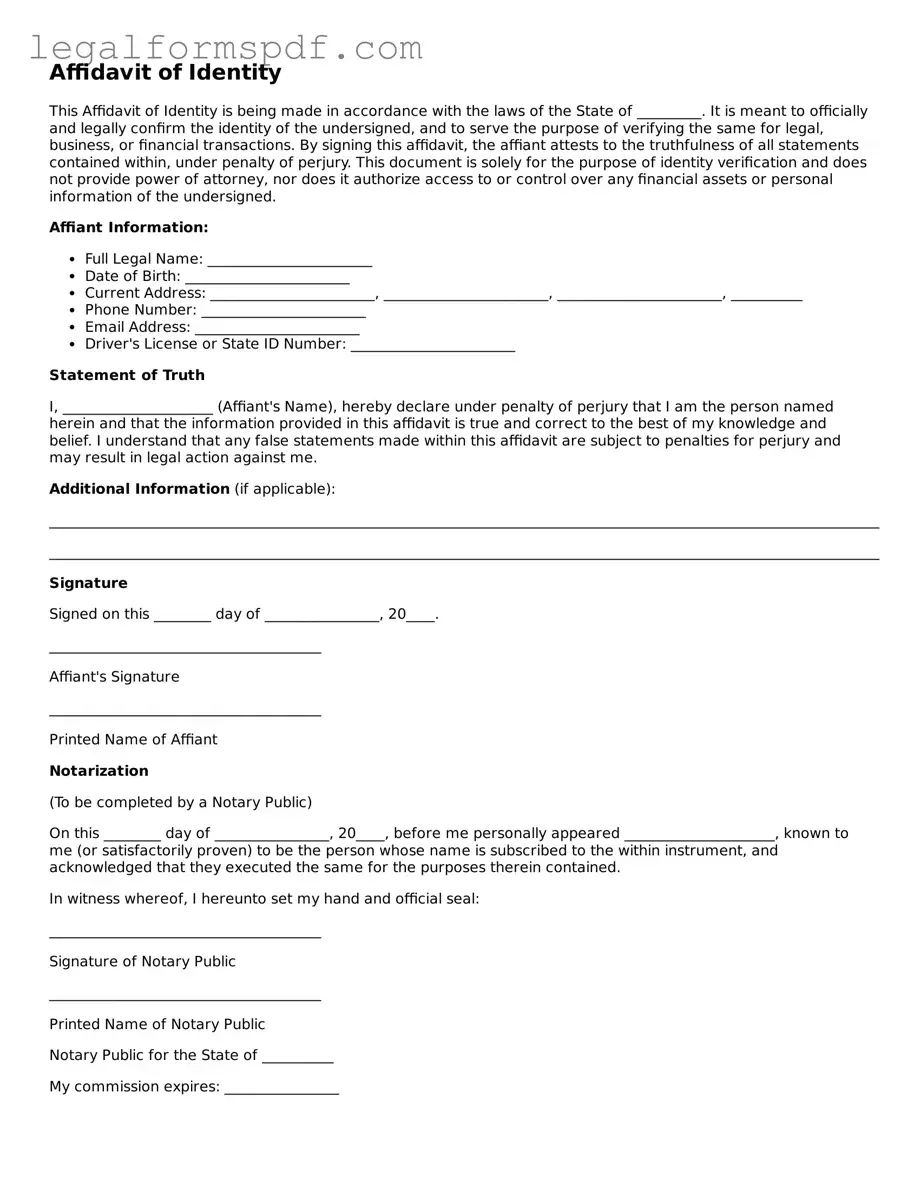What is an Affidavit of Identity?
An Affidavit of Identity is a legal document that confirms a person's identity. It is typically used in situations where there is a need to provide a high level of verification, such as in legal proceedings, financial transactions, or anytime conclusive proof of identity is required. This affidavit is sworn before a notary public or similar official, attesting to the truthfulness of the information provided.
Why would I need an Affidavit of Identity?
You might need an Affidavit of Identity in a variety of situations. This could include, but is not limited to, proving your identity for legal purposes, executing transactions that require verified identification, claiming an inheritance, or resolving any discrepancies related to your personal information. It serves as a reliable means of confirming that you are who you say you are.
What information is included in an Affidavit of Identity?
Typically, an Affidavit of Identity will contain your full legal name, birth date, address, and sometimes additional identifiers like your social security number or driver’s license number. It will also include a statement of truth where you affirm that the information provided is accurate to the best of your knowledge. The document must be signed in the presence of a notary public or qualified official who also signs, affirming your identity.
How do I obtain an Affidavit of Identity?
To obtain an Affidavit of Identity, you usually need to create or complete a form that includes all necessary personal information. After filling it out, you must sign it in the presence of a notary public or another person authorized to administer oaths. The notary will verify your identity, typically with a government-issued ID, and then notarize the affidavit, officially validating it.
Can I create my own Affidavit of Identity?
While it is possible to create your own Affidavit of Identity by including all necessary elements and following a general format, it is crucial to ensure that the document meets any specific legal requirements for your situation or jurisdiction. Seeking legal advice or using a professionally prepared template may help ensure that the affidavit is valid and accepted by the receiving party.
Is there a fee to notarize an Affidavit of Identity?
Yes, most notaries public charge a fee to notarize documents, including an Affidavit of Identity. The cost can vary depending on your location and the service provider. Some financial institutions and public libraries offer notary services at a reduced cost or even for free to their members.
How long is an Affidavit of Identity valid?
The validity period of an Affidavit of Identity can vary depending on the purpose for which it is being used and the requirements of the requesting entity. Some organizations may require a recently notarized affidavit, while others may accept documents that are older. It is best to check with the requesting authority to understand their specific requirements.
Who can notarize my Affidavit of Identity?
Any notary public or qualified official who is authorized to administer oaths and affirmations in your jurisdiction can notarize your Affidavit of Identity. This could include officials in certain government offices, at financial institutions, or independent notaries offering their services to the public.
What if my Affidavit of Identity is rejected?
If your Affidavit of Identity is rejected, it is important to understand the reasons for the rejection. Common reasons could include errors in the affidavit, lack of necessary information, or failure to meet specific legal requirements. Upon understanding the issues, you can address them by correcting the affidavit or seeking legal assistance to ensure your revised affidavit complies with all necessary criteria.
